#circa 1750
Text
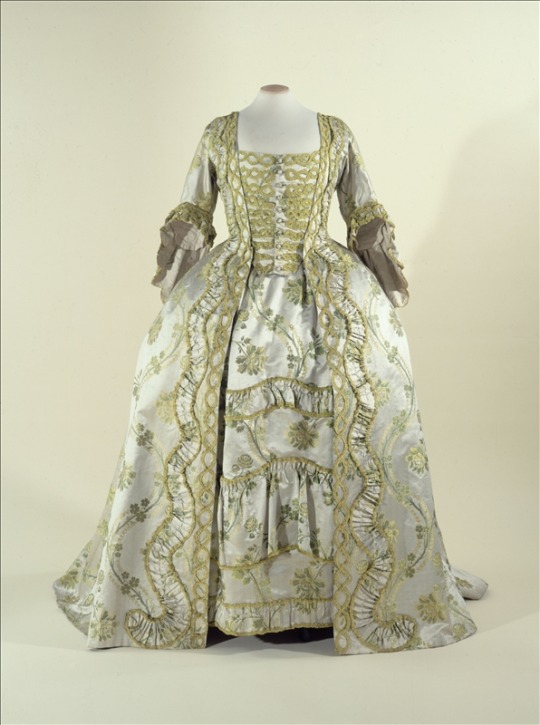

This pale green and grey robe à la française is quite dreamy, isn't it? Though I am a fan of the bright, bold patterns of this period, there is something to be said about an understated combination like this.
While certainly not as wide in the hips as some similar gowns, this dress dates from the middle of the 18th century, somewhere between 1750 and 1760. It makes beautiful use of the S curve patterning as well as scalloping and pleating. The subtle color differences on satin lend a very ethereal aesthetic to the piece on the whole.
French dress © L. Degrâces and Ph. Ladet / Paris Museums, Palais Galliera
#fashion history#threadtalk#historical costuming#costume history#silk dress#textiles#costume#history of fashion#18th century#18th century fashion#circa 1750
342 notes
·
View notes
Photo
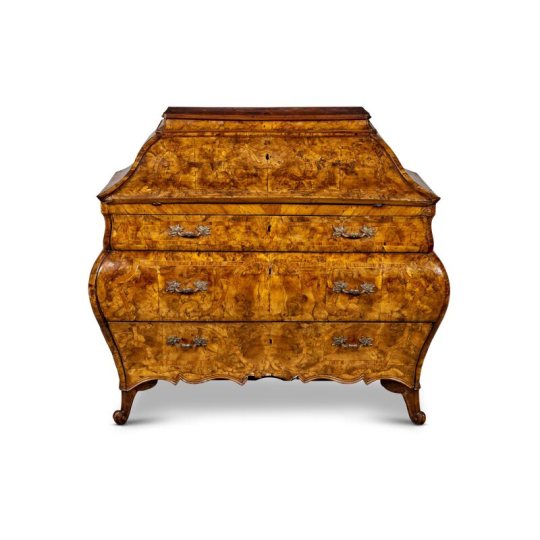
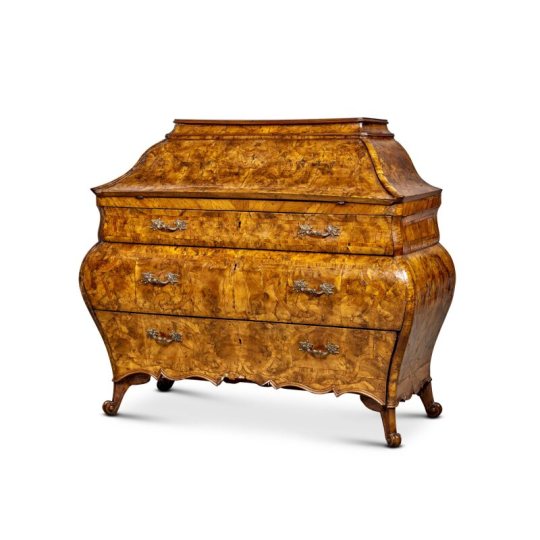


A Venetian Rococo Burr-Walnut Ribalta, Circa 1750
Height 45 in. ; width 51 1/2 in.; depth 23 1/2 in.
114.3 cm; 131 cm; 60 cm.
#A Venetian Rococo Burr-Walnut Ribalta Circa 1750#french furniture#walnut#beauty#beautiful#art#artist#art work#art world#art news
14 notes
·
View notes
Text
lingua magnus cao xueqin, circa 1750: hey man so i'm, like, friends with the current obscurist magnus and i just have a few doubts about the ethics of imprisoning obscurists—
the archivist: doubts?? haha you’re funny. anyway don’t worry about your friend the obscurist magnus. i killed her! so at least she won’t be feeling sad about being locked in her tower anymore :( 'cause she can't feel anything! ha! also don’t you know obscurists LIKE being locked in there?? it’s their favourite place to be! now shut up or i kill you too you measly curator
#this is what happened right#sorry i just found this exchange hilarious#the great library#i said circa for the vibes. the letters are dated at exactly 1750. i'm a liar
3 notes
·
View notes
Text
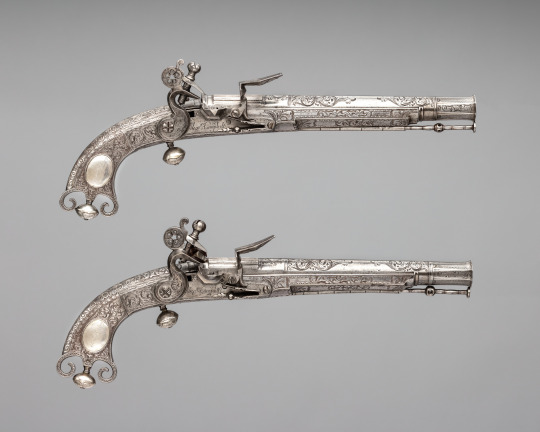
A pair of flintlock pistols crafted by Alexander Campbell of Doune, Scotland, circa 1750
from The Metropolitan Museum of Art
291 notes
·
View notes
Text

Jan Bartek - AncientPages.com - New scientific research has revealed a piece of tartan found in a peat bog in Glen Affric around forty years ago can be dated to circa 1500-1600 AD, making it the oldest known surviving specimen of true tartan in Scotland.
The Scottish Tartans Authority commissioned Dye Analysis and Radiocarbon testing on the woolen textile to prove its age.
Scotland's Oldest Tartan On Display For The First Time!
Glen Affric tartan - Scotland's oldest-known true tartan discovered by The Scottish Tartans Authority to go on display for the first time at V&A Dundee's Tartan exhibition.
Credit: Alan Richardson Pix-AR
The first investigation was dye analysis carried out by analytical scientists from National Museums Scotland. Using high-resolution digital microscopy, four colors were visually identified for dye analysis: green, brown, and possibly red and yellow.
The dye analysis confirmed the use of indigo/woad in the green but was inconclusive for the other colors, probably due to the dyestuff degradation state. However, no artificial or semi-synthetic dyestuffs were involved in making the tartan, which pointed to a date of pre-1750s.
Further clarification on the age of the tartan involved radiocarbon testing at the SUERC Radiocarbon Laboratory in East Kilbride. The process involved washing out all the peat staining, which would have otherwise contaminated the carbon content of the textile.
The Radiocarbon testing results identified a broad date range between 1500 and 1655 AD, with the period between 1500 and 1600 AD the most probable. This makes it the oldest-known piece of true tartan found in Scotland – the Falkirk ‘tartan,’ dating from the early third century AD, is actually a simpler check pattern woven using undyed yarns.
The Glen Affric tartan, which measures around 55cm by 43cm, is now on display for the first time at V&A Dundee’s Tartan exhibition.
by TaboolaSponsored Links
The piece will be the oldest exhibit among more than 300 objects. The exhibition examines tartan’s universal and enduring appeal through iconic and everyday examples of fashion, architecture, graphic and product design, photography, furniture, glass and ceramics, film, performance, and art.
“The testing process has taken nearly six months, but the effort was well worth it, and we are thrilled with the results!
In Scotland, surviving examples of old textiles are rare as the soil is not conducive to their survival. As the piece was buried in peat, meaning it had no exposure to air and was therefore preserved.
The tartan has several colors with multiple stripes of different sizes, and so it corresponds to what people would think of as a true tartan.
“Although we can theorize about the Glen Affric tartan, it’s important that we don’t construct history around it. Although Clan Chisholm controlled that area, we cannot attribute the tartan to them as we don’t know who owned it.
“The potential presence of red, a color that Gaels considered a status symbol, is interesting because of the more rustic nature of the cloth. This piece is not something you would associate with a king or someone of high status; it is more likely to be an outdoor working garment," Peter MacDonald, Head of Research and Collections at The Scottish Tartans Authorit said.
Scotland's Oldest Tartan On Display For The First Time!
New scientific research has revealed a piece of tartan found in a peat bog in Glen Affric, Scotland around forty years ago can be dated to circa 1500-1600 AD, making it the oldest known surviving specimen of true tartan in Scotland. Credit: Credit: Alan Richardson Pix-AR
“The Glen Affric tartan is clearly a piece of national and historical significance. It is likely to date to the reign of James V, Mary Queen of Scots, or James VI/I. “There is no other known surviving piece of tartan from this period of this age. It's a remarkable discovery and deserves national attention and preservation. “It also deserves to be seen and we’re delighted that it is to be included in the Tartan exhibition at V&A Dundee,” John McLeish, Chair of The Scottish Tartans Authority, said.
“We knew The Scottish Tartans Authority had a tremendous archive of material and we initially approached them to ask if they knew of any examples of 'proto-tartans' that could be loaned to the exhibition.
I'm delighted the exhibition has encouraged further exploration into this plaid portion and very thankful for The Scottish Tartans Authority's backing and support in uncovering such a historic find.
To be able to exhibit the Glen Affric tartan is immensely important in understanding the textile traditions from which modern tartan derives, and I'm sure visitors will appreciate seeing this on public display for the very first time," James Wylie, curator at V&A Dundee said.
Tartan at V&A Dundee opens on Saturday, 1 April, until 14 January 2024.
Written by Jan Bartek - AncientPages.com Staff Writer
Source: Facebook
Source: AncientPages.com
236 notes
·
View notes
Text

Shri devi (Palden Lhamo), Central Tibet, circa 1750-1850.
#thangka#tibetan art#tibetan buddhist art#buddhist art#art#arte#arte budista tibetana#arte budista#painting#pintura#sri devi#palden lhamo#dharmapala#sacred art#arte sacra#tibet
94 notes
·
View notes
Text

Pompadour hollyhock (circa 1750) by Madeleine Françoise Basseporte and her circle (1701-1780).
Watercolour over graphite.
Image and text information courtesy The Morgan Library and Museum.
282 notes
·
View notes
Text
SACK-BACK GOWN WITH PETTICOAT
CIRCA 1750-1760
Embroidered Silk Damask Silk Thread

Women's fashions of the second half of the 18th century displayed a wide silhouette as panniers (side hoops) held the skirt out at the hips while stays (corset) created a narrow waistline. The dress was usually called a robe; while the skirt was called a petticoat. A robe à la Française, or sack-back gown, combined a taut bodice with folds of fabric that extended from the back neckline down to the hem of the gown. This gown may have arrived in the American colonies as a ready-made fashion or perhaps lengths of the silk brocade had been imported from Spitalsfield, England. Spitalsfield was the manufacturing site for numerous floral silks, silk brocades and damasks.
The Mint Museum
83 notes
·
View notes
Text

Jewish amulet from Galicia, western Ukraine, circa 1750
1K notes
·
View notes
Photo


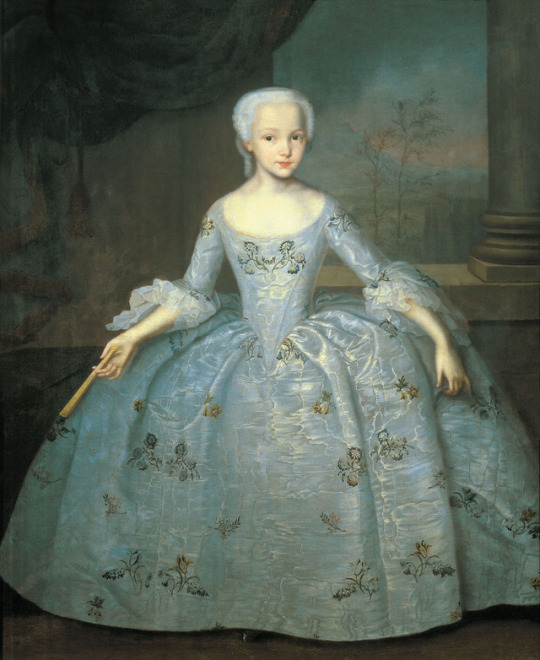
Portrait of Sarah Eleanore Fairmor by Ivan Vishnyakov, circa 1749-1750
78 notes
·
View notes
Text
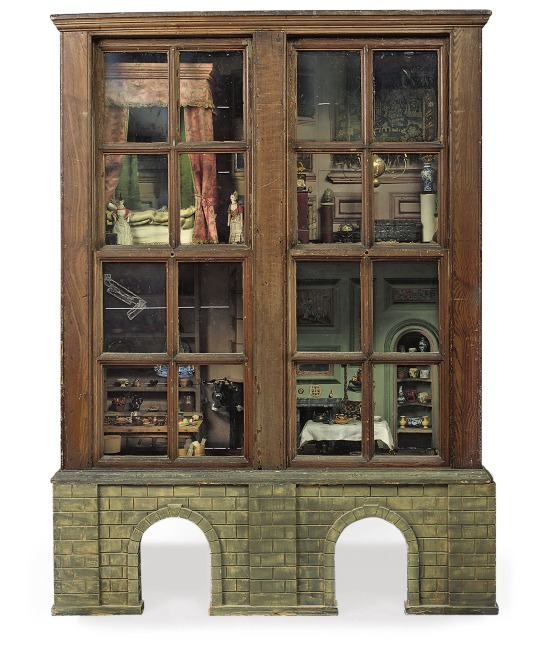
A GEORGE II GRAINED FOUR-ROOM 'BABY' HOUSE
CIRCA 1750
Painted to simulate oak, with sash windows, the interior by repute redecorated by Charlotte Brontë in 1839,
with a large collection of dolls house furnishings added by Roger Warner
Christie’s
29 notes
·
View notes
Text

Two airtwist wine glasses, circa 1750
36 notes
·
View notes
Text
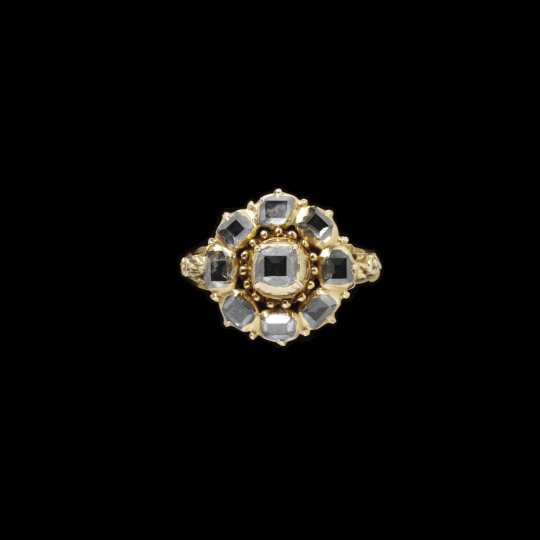
Gold diamond ring, Spain, circa 1700 - 1750
from The Victoria & Albert Museum
344 notes
·
View notes
Text
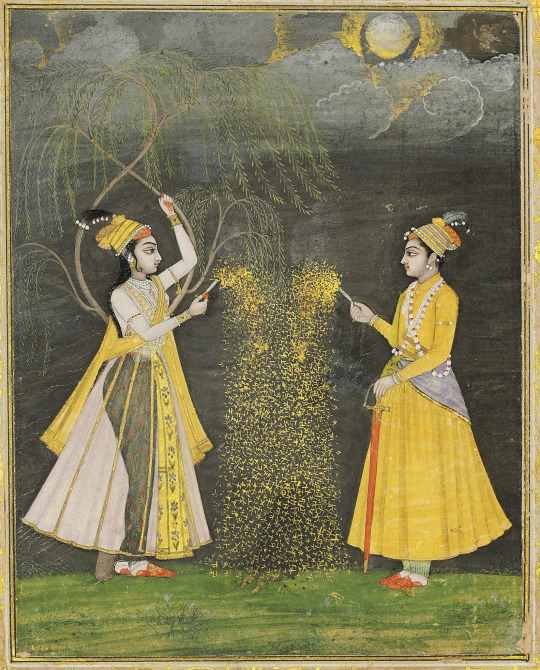

A prince and princess holding fireworks
provincial Mughal India, circa 1750-60
Opaque pigments heightened with gold on paper
Christie's
84 notes
·
View notes
Photo

A clay tablet from circa 1750 B.C., inscribed with “The Exaltation of Inanna,” a poem attributed to Enheduanna, a priestess believed to be the first individually named author in history.
Photo Credit...Lila Barth for The New York Times
192 notes
·
View notes
Text

"Etui-Nécessaire" anonyme en agate gris bleuté rubanée, monture en or repoussé, ajouré et ciselé et diamants avec quatre instruments à l'intérieur (circa 1750-70) à l'exposition "Luxe de Poche - Petits Objets Précieux au Siècle des Lumières" au Musée Cognacq-Jay, avril 2024.
7 notes
·
View notes